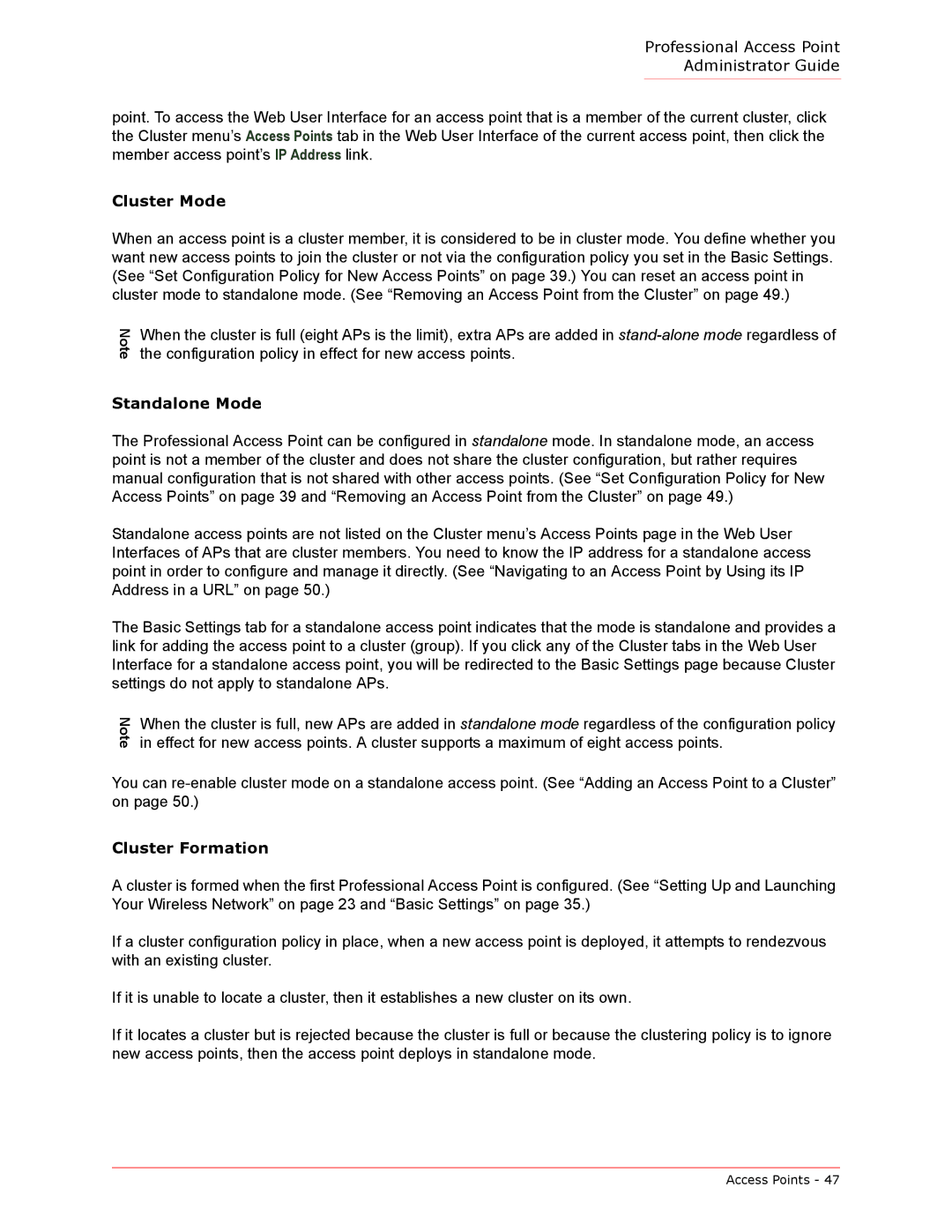
Professional Access Point
Administrator Guide
point. To access the Web User Interface for an access point that is a member of the current cluster, click the Cluster menu’s Access Points tab in the Web User Interface of the current access point, then click the member access point’s IP Address link.
Cluster Mode
When an access point is a cluster member, it is considered to be in cluster mode. You define whether you want new access points to join the cluster or not via the configuration policy you set in the Basic Settings. (See “Set Configuration Policy for New Access Points” on page 39.) You can reset an access point in cluster mode to standalone mode. (See “Removing an Access Point from the Cluster” on page 49.)
Note
When the cluster is full (eight APs is the limit), extra APs are added in
Standalone Mode
The Professional Access Point can be configured in standalone mode. In standalone mode, an access point is not a member of the cluster and does not share the cluster configuration, but rather requires manual configuration that is not shared with other access points. (See “Set Configuration Policy for New Access Points” on page 39 and “Removing an Access Point from the Cluster” on page 49.)
Standalone access points are not listed on the Cluster menu’s Access Points page in the Web User Interfaces of APs that are cluster members. You need to know the IP address for a standalone access point in order to configure and manage it directly. (See “Navigating to an Access Point by Using its IP Address in a URL” on page 50.)
The Basic Settings tab for a standalone access point indicates that the mode is standalone and provides a link for adding the access point to a cluster (group). If you click any of the Cluster tabs in the Web User Interface for a standalone access point, you will be redirected to the Basic Settings page because Cluster settings do not apply to standalone APs.
Note
When the cluster is full, new APs are added in standalone mode regardless of the configuration policy in effect for new access points. A cluster supports a maximum of eight access points.
You can
Cluster Formation
A cluster is formed when the first Professional Access Point is configured. (See “Setting Up and Launching Your Wireless Network” on page 23 and “Basic Settings” on page 35.)
If a cluster configuration policy in place, when a new access point is deployed, it attempts to rendezvous with an existing cluster.
If it is unable to locate a cluster, then it establishes a new cluster on its own.
If it locates a cluster but is rejected because the cluster is full or because the clustering policy is to ignore new access points, then the access point deploys in standalone mode.
Access Points - 47
